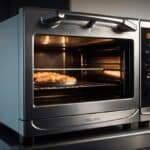It’s common practice to sand down brick to remove old paint or to prep the surface for new paint and primer. However, since it is such a robust and often rough surface, many people wonder if sanding brick is even possible.
In general, it will depend on the type of brick and what the initial texture is like (source: Civil Click)
It’s possible to sand down brick provided it has a semi-smooth texture to begin with.
In contrast, heavily textured bricks are difficult or even impossible to sand down as they are resistant to abrasion and will simply wear the sandpaper down. However, paint chips can be sanded off on most bricks.
If you need to sand down bricks – to remove blemishes, smooth or align them – you may need to use more tools to achieve your goal.
The rest of this article will discuss the process of sanding bricks, the tools to use, and how to go about it.

Tips for Sanding Brick
One of the main reasons you may need to sand brick is to add paint to the surface. For example, if the wall is uncovered in your home, the last thing you want is to have rough, sharp edges exposed to you and your family.
In this case, you can use a sander to simply remove the paint. But you won’t be worrying too much about smoothing out the surface of the brick itself.
Before sanding down the brick, you need to check its condition. Some bricks wear out over time and are likely to crumble, especially if you use sanding tools to smooth them.
However, if the bricks are still in great shape, but you wish to sand them to smooth them or remove unsightly discoloration, you can do so with the following supplies:
- Use 40 – 50 grit sandpaper when sanding small areas. The lower the sandpaper number, the coarser and more effective it is. If you’re sanding a larger surface, use a sanding block to protect your hands.
Since the brick has a rough surface, the risk of hurting your hands is high (source: Home Stratosphere, Norton).
- Buy sandpaper with a black coating. Silicon carbide is the hardest and most abrasive grit around.
Sandpaper with a black coating is the only sandpaper that works on stone and is likely to be effective on the rough brick surface.
You can get silicon carbide on belts, sheets, and sponges for hand sanding and power sanding (source: UNEEDA, Home Steady).
- Choose Alumina-Zirconia for sanding large areas. This sandpaper is only available in coarser grits, with the highest grit being 120.
Alumina Zirconia is used on brick, hard metals, and raw wood because it withstands high and medium pressure. In addition, it’s available on heavy cloth backings and is used on power sanding tools.
Here are the products available on Amazon.com that I recommend when sanding down a brick:
- Loft Fancy Silicon Carbide Sandpaper – is assorted, with 80 – 3,000 grit. Each grit has three sheets and can be used for wet and dry applications. The sheets are electro-coated, so they won’t tear as you work.
- XTYML Aluminum Oxide Sanding Belts – have 80 – 400 coarse grit. The belt is 4 inches x 36 inches (10.16 cm x 91.44 cm), and there are 15 in a pack.
As a result, sanding is easier and faster, especially if used on sanding tools like sanders and grinders.
How To Grind Down Bricks
If you need to sand down bricks because they’re too rough to begin with, a piece of sandpaper won’t cut it.
As mentioned, some brick is too rough and hard to sand. In those cases, you’ll need to use something far more durable.
Besides sandpaper and sanding tools, you can also use a grinder to smooth bricks, especially those with a rough texture.
A grinder will also come in handy when you want to sand an entire wall of bricks. However, before you start work, you’ll need to ensure the bricks aren’t weak; otherwise, they’ll crumble under pressure.
Here’s how to use a grinder on bricks:
- Attach a diamond cup wheel to an angle grinder.
- Hold the grinder with both hands to ensure you work comfortably and keep from grinding too deep into the bricks.
- Work about ¾ inches (1.91 cm) into the bricks at a time (source: Blades & Bits).
- Wear protective gear and use a drill dust attachment to minimize the dust to keep from getting dusty.
- Alternatively, you can wet the bricks before you start grinding (source: This Old House).
The Bosch Grinder Collection Attachment (available on Amazon.com) is compatible with 4.5-inch (11.43 cm) and 5-inch (12.7 cm) small-angle grinders.
In addition, it has a single depth screw adjustment which allows you to adjust it depending on how deep you go when grinding the bricks.
This YouTube video illustrates how you can use an angle grinder to sand down bricks:
How To Choose the Best Diamond Cup Wheel
When buying a diamond cup wheel, you’ll find they come in different sizes and shapes. So before making a purchase, consider the following:
- The purpose of the diamond wheel. Are you using it to grind a rough surface, like bricks, or will you use it on wood?
Since you intend to use it on brick, you need to get a diamond wheel with large diamond segments.
Diamond cup wheels with smaller segments are suitable for smoother surfaces, like epoxy surfaces.
- The diamond bond. When grinding bricks or any other material, the bond will help maintain an even surface.
This is the part that eventually wears out. When grinding a rough surface, the rule of the thumb is to use a soft bond.
In contrast, when grinding a soft surface, you should use a hard bond (source: BMD, Forture Tools).
- A diamond grit of 35 – 50 is suitable for coarse grinding. Fine grinding needs 80 and 120 grit. But the higher grit for fine grinding has more diamond concentration than the grinding wheel.
Conclusion
If your brick wall or fireplace has lost its appeal because of age or exposure to elements, you can sand down the top surface in order to add new primer and paint.
You’ll need to use coarse grit to work and remember that it will likely only take off the existing paint.
Unfortunately, since bricks have such a hard surface, you may need to use sanding or grinding tools to smooth out the brick itself.













